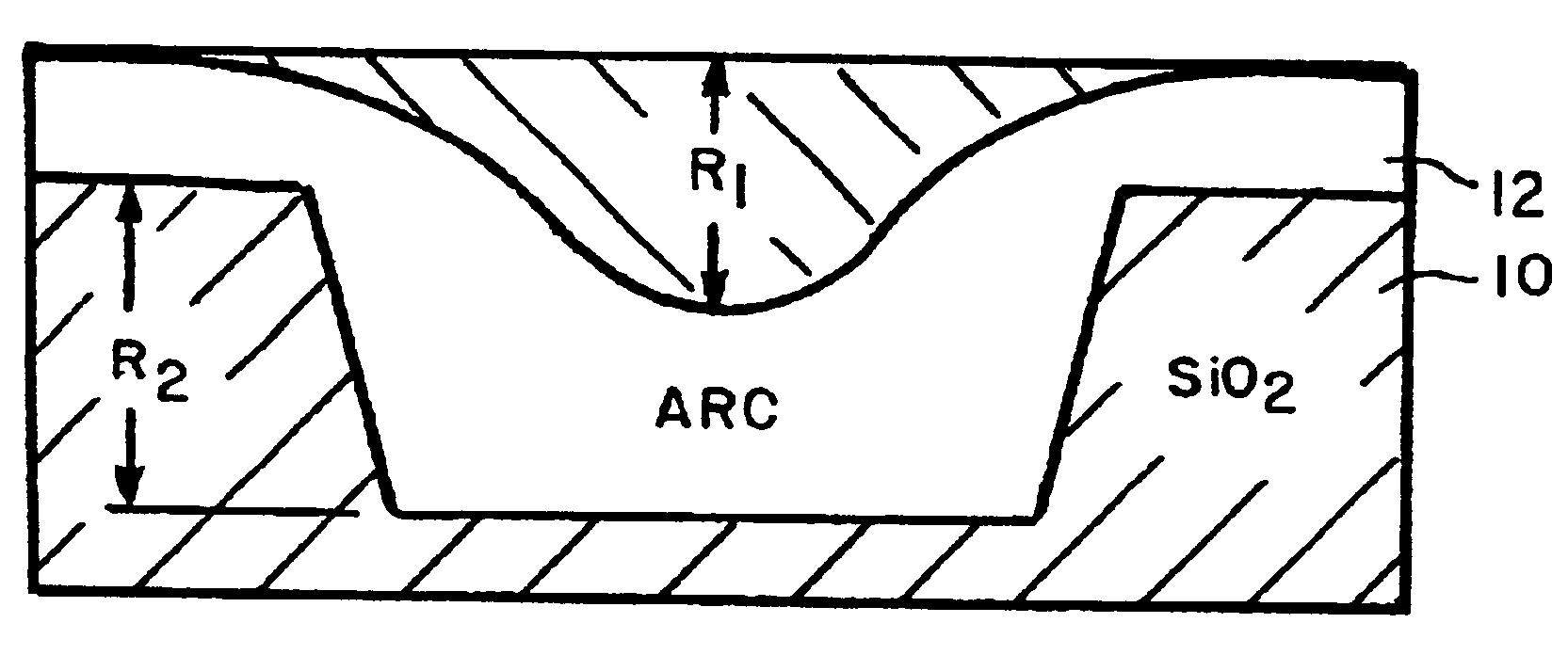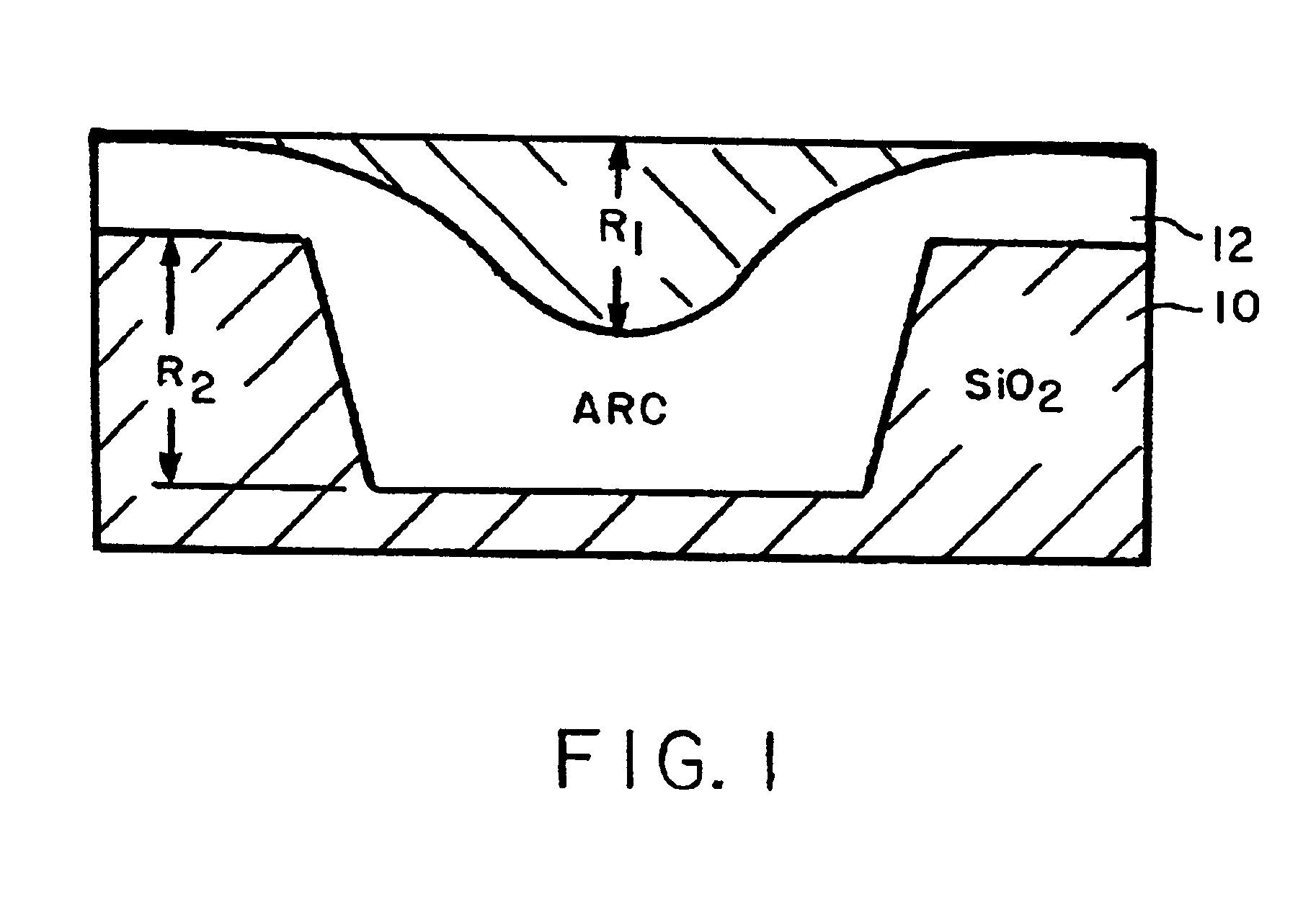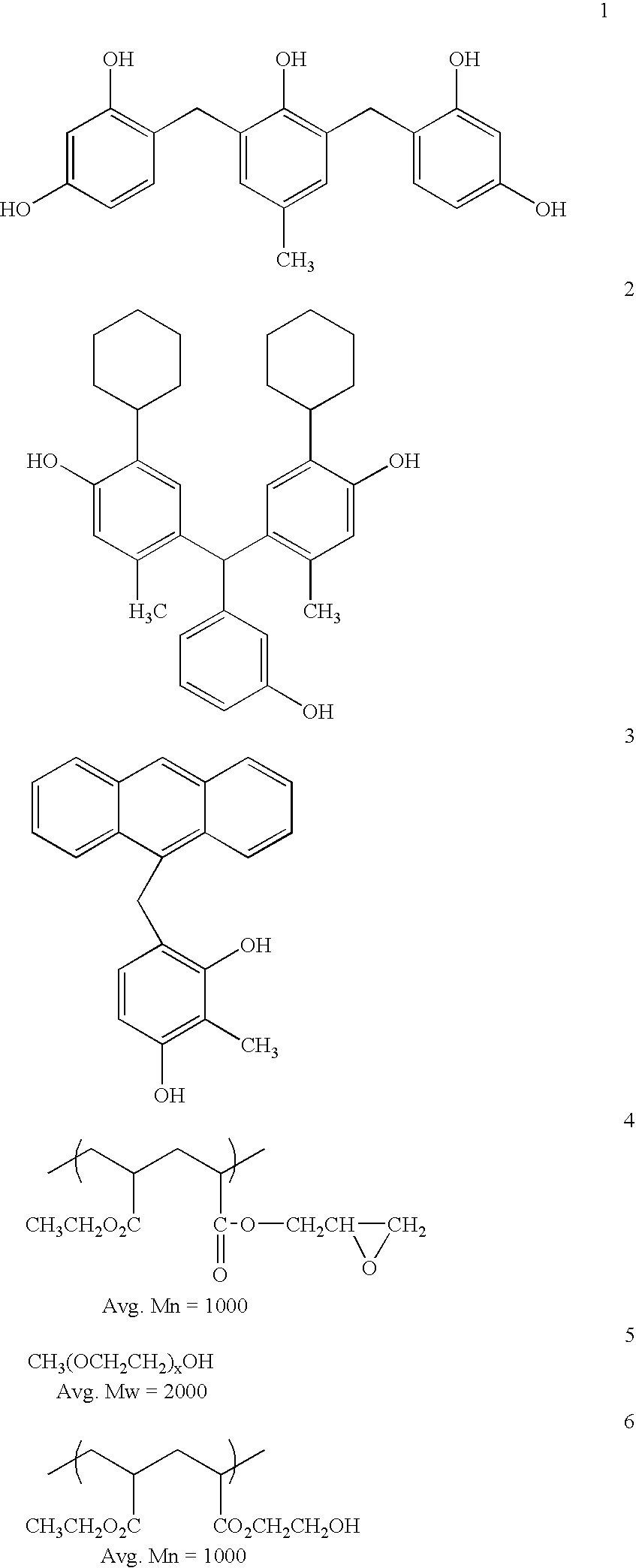Planarizing antireflective coating compositions
a coating composition and anti-reflective technology, applied in the field of anti-reflective coating compositions, can solve the problem that the thickness of the desired quarter wave coating layer cannot be maintained, and achieve the effect of enhancing the planarization
- Summary
- Abstract
- Description
- Claims
- Application Information
AI Technical Summary
Benefits of technology
Problems solved by technology
Method used
Image
Examples
example 1
Synthesis of ARC Polymer
9-Anthracenemethyl methacrylate (155.63 g), 2-hydroxyethyl methacrylate (65.07 g), and methyl methacrylate (65.62 g) were dissolved in 1850 g of ethyl lactate. The solution was degassed with a stream of dry nitrogen for 15 min. and heated to 50° C. The polymerization initiator [2,2′azobis(2-methylbutanenitrile)] (23.217 g) was dissolved in 110 g of ethyl lactate and this solution was rapidly added to the reaction flask; heating continued to 85° C. Heating at 85° C. was maintained for 24 hours. The solution was cooled to room temperature. The polymer product was isolated by precipitation into 12 L of deionized water and dried in vacuum. Yield 100%. Molecular weight (Mw) (vs. polystyrene standards) 8355; Tg 103° C.
example 2
Synthesis of Low Mw ARC Polymer with Chain Transfer Agent
9-Anthracenemethyl methacrylate (15.56 g), 2-hydroxyethyl methacrylate (6.51 g), and methyl methacrylate (6.59 g) were dissolved in 200 g of ethyl lactate, t-Dodecylthiol (2.01 g) was added as a chain transfer agent. The solution was degassed with a stream of dry nitrogen for 10 min. and heated to 50° C.; 1.015 g of the polymerization initiator [2,2′azobis(2-methylbutanenitrile)] was added and heating continued to 85° C. The solution was heated at 85° C. for 24 hours. The solution was cooled to room temperature and diluted with 50 g additional ethyl lactate. The polymer product was isolated by precipitation into 2 L of hexane and dried in vacuum. Yield 86%. Molecular weight (Mw) (vs. polystyrene standards) 6304; Tg 101° C.
example 3
Synthesis of Low Mw ARC Polymer with Chain Transfer Agent
9-Anthracenemethyl methacrylate (15.58 g), 2-hydroxyethyl methacrylate (6.51 g), and methyl methacrylate (6.58 g) were dissolved in 200 g of ethyl lactate, t-Dodecylthiol (4.06 g) was added as a chain transfer agent. The solution was degassed with a stream of dry nitrogen for 10 min. and heated to 50° C.; 1.012 g of the polymerization initiator [2,2′azobis(2-methylbutanenitrile)] was added and heating continued to 85° C. The solution was heated at 85° C. for 24 hours. The solution was cooled to room temperature. The reaction solution was precipitated into 800 mL of t-butylmethylether. The mixture was filtered, the collected liguors were concentrated, and the resultant oil was precipitated into 300 mL heptane and dried in vacuum. Yield 21%. Molecular weight (Mw) (vs. polystyrene standards) 2337; Tg 60° C.
PUM
| Property | Measurement | Unit |
|---|---|---|
| Mw | aaaaa | aaaaa |
| Mw | aaaaa | aaaaa |
| Mw | aaaaa | aaaaa |
Abstract
Description
Claims
Application Information
 Login to View More
Login to View More - R&D
- Intellectual Property
- Life Sciences
- Materials
- Tech Scout
- Unparalleled Data Quality
- Higher Quality Content
- 60% Fewer Hallucinations
Browse by: Latest US Patents, China's latest patents, Technical Efficacy Thesaurus, Application Domain, Technology Topic, Popular Technical Reports.
© 2025 PatSnap. All rights reserved.Legal|Privacy policy|Modern Slavery Act Transparency Statement|Sitemap|About US| Contact US: help@patsnap.com



